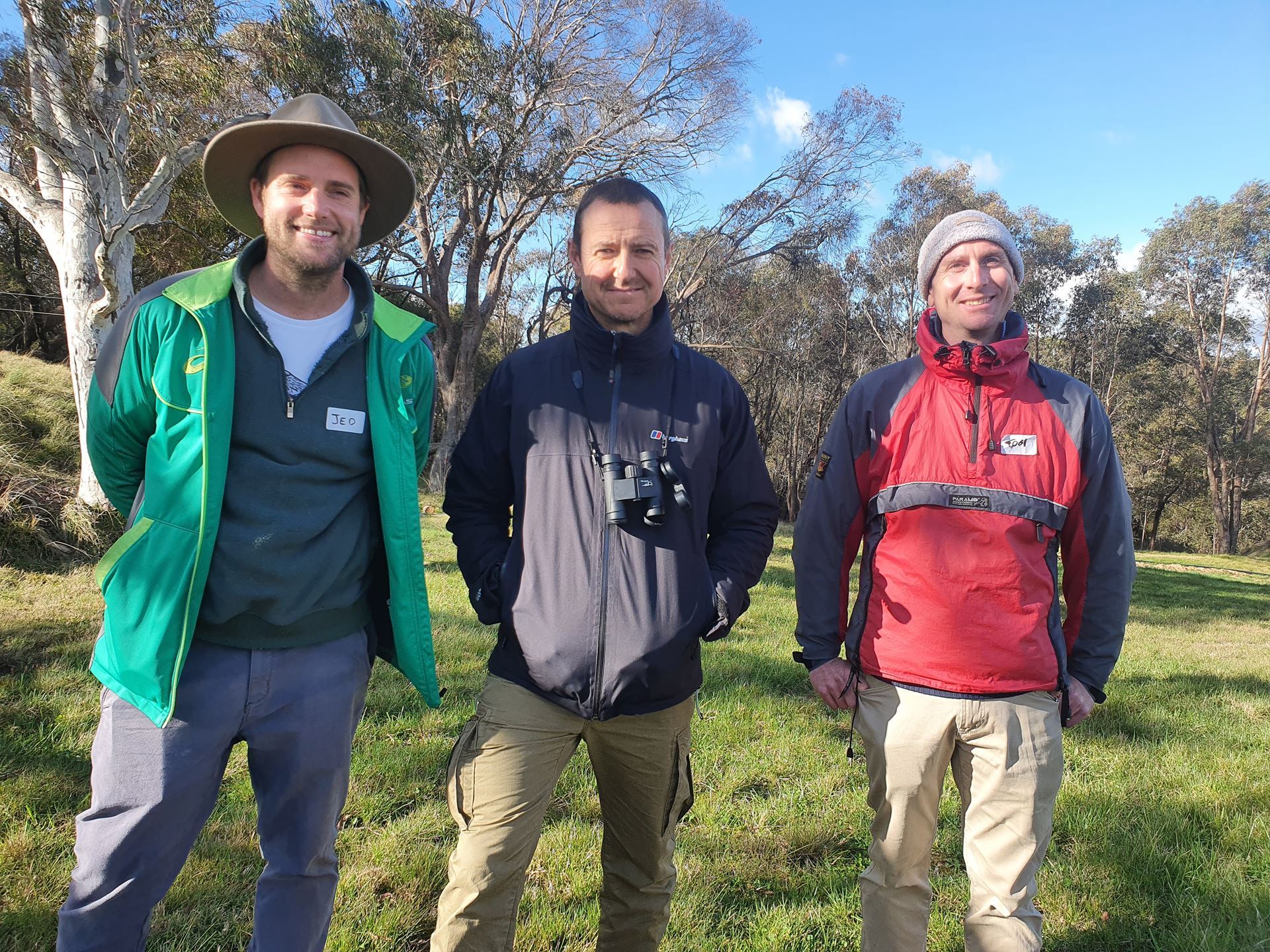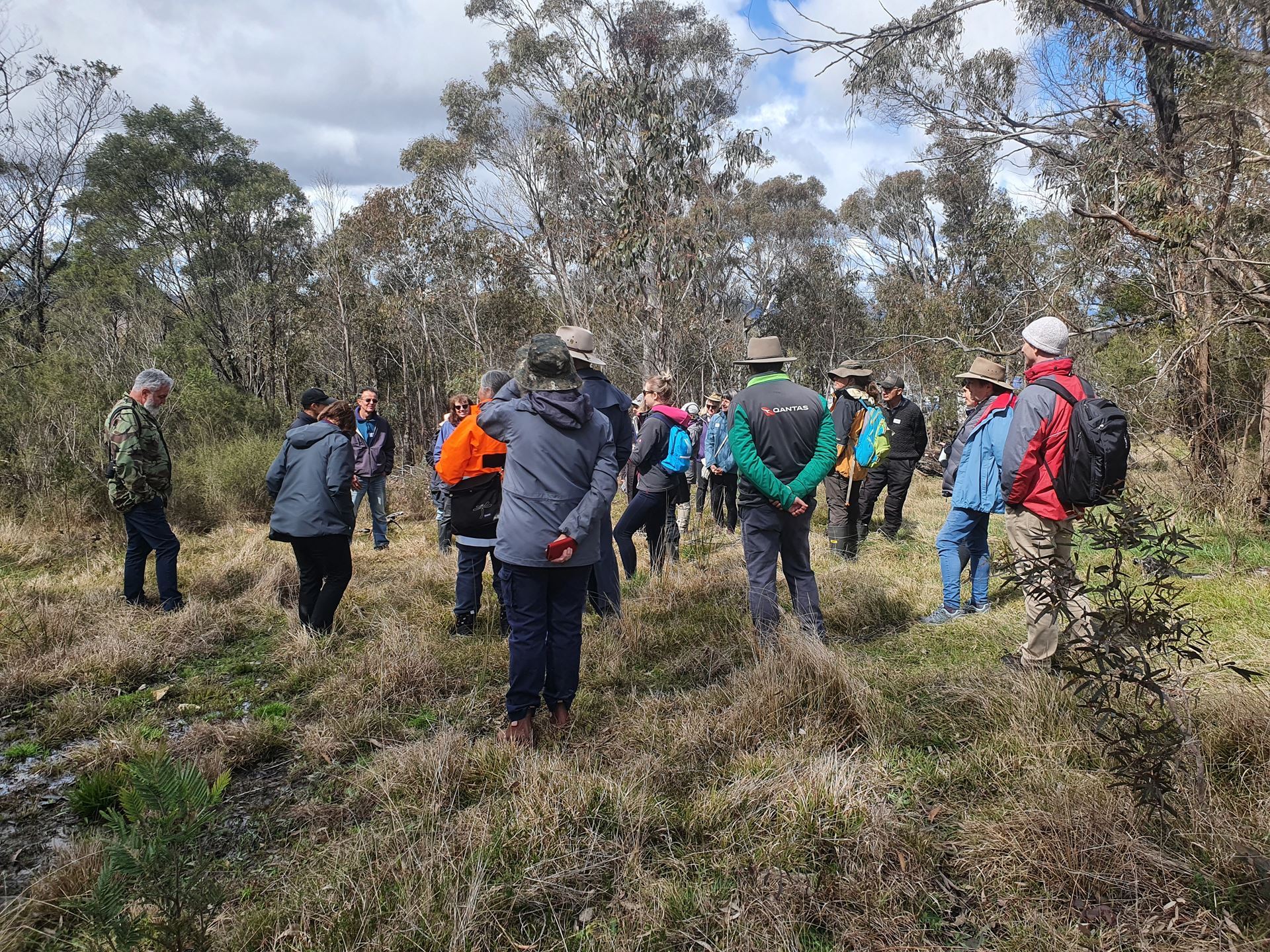On Saturday 10 September 2022 twenty-six landholders participated in the Woodland Bird and Habitat Workshop held at Mulloon, just outside of Bungendore. Richard Beggs (ANU Sustainable Farms), Tobi Edmunds (NSW Biodiversity Conservation Trust) and Jed Pearson (Molonglo Catchment Group) joined us to talk about native birds and their habitat requirements. The aim of the workshop was to highlight the importance of retaining and creating habitat for woodland birds.

Jed, Richard and Tobi - presenting at the workshop
Small woodland birds are amongst the most threatened groups of birds in South-Eastern New South Wales. This is due to habitat loss from development, agriculture, lack of food resources and competition for habitat from birds like noisy minors.
These are the key points from the workshop:
- Woodland birds like structural diversity in their habitat, including grasses and forbs, open patches for foraging, mid story shrubs and some trees. Spikey bushes, dead trees and fallen wood provide great nesting sites and habitat.
- Dams act as ‘insect chimneys’ and increase food resources for birds and other animals. Fencing farm dams can provide dual benefits by improving habitat values and providing better water quality for livestock. Fencing and revegetation improve water quality by reducing faecal contamination and supporting the physical and chemical filtering of inflows. Better quality water is more palatable to livestock so may encourage greater water consumption and allow greater feed consumption. Remarkably little research has been done on the relationship between water quality and weight gain, however. Properly managed farm dams can provide phytoremediation (water cleaning services) by aquatic plants and animals.
- Livestock preferentially graze some species of plants in native pasture. The Biodiversity Conservation Trust (BCT) uses a floristic value score to rate the value of grasslands and woodlands. Some species that are preferentially grazed include glycine, bulbine lily and other legume species.
- There are a number of bird and plant identification apps available including -
For birds - Pizzey & Knight Birds of Australia and Canberra Nature Map
For plants – Picture This and Plants of South- Eastern Australia
5. Landholders with an in-perpetuity agreement with the BCT are eligible for rate relief on the part of the property being conserved under an agreement.

Richard identified twenty-one bird species and Jed three species of frogs, including:
- Australian magpie
- Australian raven (& nest)
- Grey currawong
- Black-faced cuckoo shrike
- Laughing kookaburra
- Crimson rosella
- Little corella
- Yellow-tailed black cockatoo
- Australian wood duck
- Pacific black duck
- Grey shrike-thrush
- Golden whistler
- White-throated treecreeper
- Yellow-rumped thornbill (& nest)
- Brown thornbill
- Striated pardalote
- Grey fantail
- Silvereye
- Red wattlebird
- Yellow-faced honeyeater
- Superb fairy wren
The frogs were the Common Eastern Froglet (Crinia signifera), the Spotted Marsh Frog (Limnodynastes tasmaniensis) and Eastern Sign-bearing Froglet (Crinia parinsignifera).
Further information
Biodiversity Conservation Trust
Phytoremediation
Friends of Grasslands Floristic Score
ANU Sustainable Farms farm dams
Save our Scarlet Robin – Saving our Species resources and guides
Landcare NSW Find a Landcare Group
This activity is part of the Partnering in Private Land Conservation. A joint initiative delivered by Landcare NSW and the NSW Biodiversity Conservation Trust. Thanks to ANU Sustainable Farms, the Molonglo Catchment Group and the Biodiversity Conservation Trust for in-kind support of this workshop.